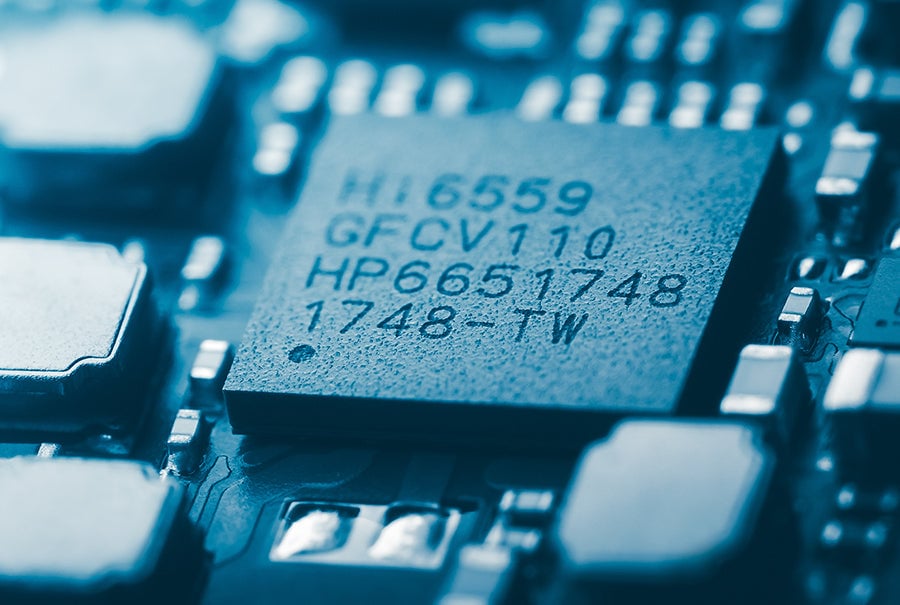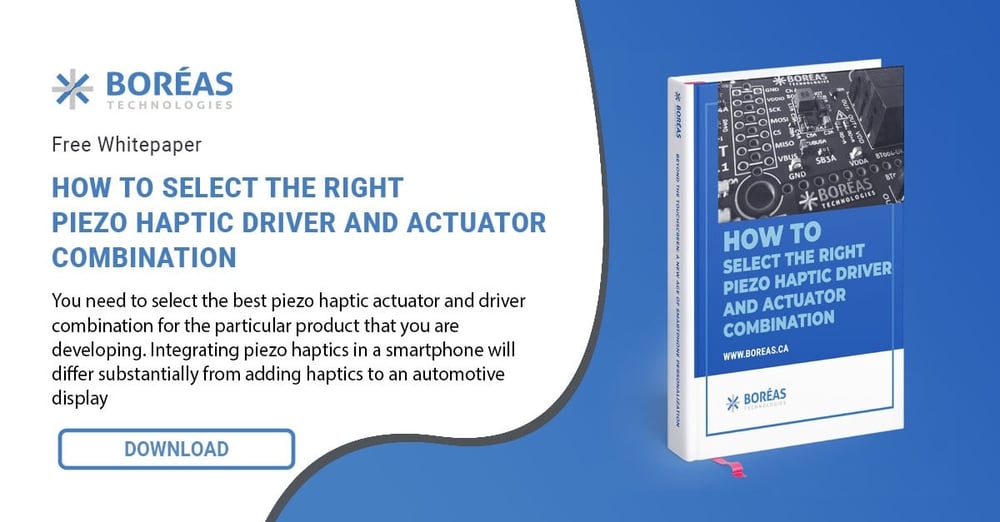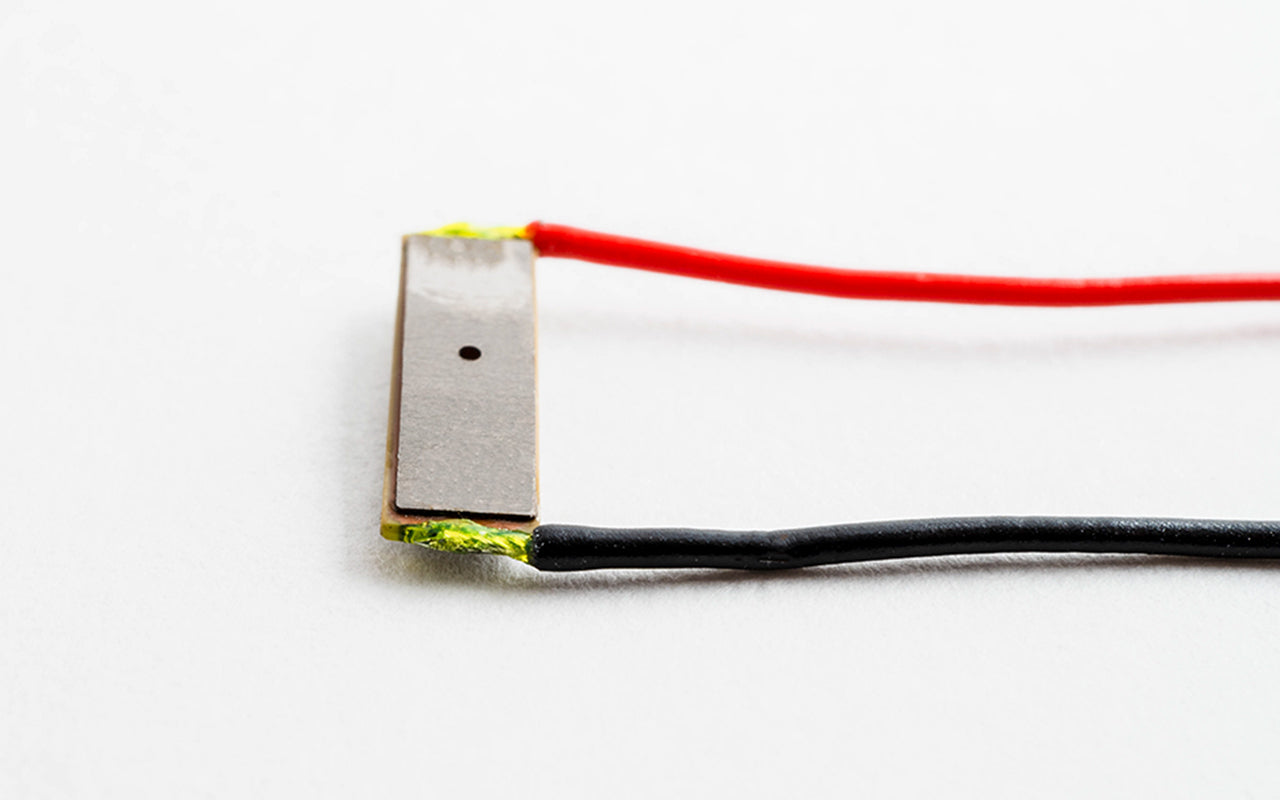
In 1880, brothers Jacques and Pierre Curie discovered piezoelectricity. The name "piezoelectricity" is derived from the Greek verb "piezein," which translates into "to squeeze or to press." It's called this because the Curie brothers found that certain materials, when put under stress, exert an electrical charge, admitting a voltage.
Since their discovery, piezo elements have been implemented to power many applications. Now, it's common to find piezoelectric-powered devices such as sensors and motors.
One of the most critical factors to understand when choosing a piezo power supply is how these materials operate on varying frequencies. Failing to select a piezo element and driver with compatible frequencies can cause a device to become unstable and potentially lead to catastrophic results.
What Is Resonant Frequency?
Every object has molecules that vibrate at a natural frequency — for example, a piece of glass. When a forced vibration (frequency) occurs that equals the natural frequency of an object, it causes the molecules to resonate more intensely. If the molecules receive a forced vibration for too long, this can put the object under great stress, and it can break.
Think of the classic example of a wine glass cracking as an opera singer hits a high note. The glass doesn't break due to the loudness of the singing. Instead, it cracks because the vibrations from the singer's voice match the natural frequency of the glass, causing it to vibrate at a greater speed than it's naturally inclined to do. In this scenario, the voice is the definition of resonant frequency: an outside vibration forcing itself against an object's natural frequency, causing it to hyper-resonate and potentially break.
Resonant frequency doesn't concern only objects like glassware; it also impacts electronic circuits. Especially in the case of piezo elements, the amplifier (or driver) and element (or actuator with load) must have a compatible operating frequency. Otherwise, it causes the equipment to malfunction, leading to time delays or incorrect measurements. In some cases, it can even damage a device.

How Resonant Frequency Is Calculated in a Piezo Motor
There are both low-frequency piezo elements and high-frequency piezo elements. As a safeguard, the resonant frequency needs to be calculated to ensure that the driving frequency doesn't cause resonance issues for the piezo elements.
To do this, measure the natural frequency with an oscilloscope. Using an oscilloscope is a quick and easy way to determine the piezo frequency of an object. Then, after calculating, you can determine the resonant frequency to avoid device issues like phase shift.
The Factors That Affect Resonant Frequency

There are a handful of variables affecting piezo resonant frequency. For example, suppose you're looking for accurate measurements to ensure your frequency range won't produce resonance. In that case, you must understand what goes into the composition of the element's natural frequency.
Only after taking measurements can you confidently select suitable materials.
Piezo Material Composition
There are many different materials used in piezo devices. These materials, also known as piezo transducers, convert mechanical energy into electrical energy. These transducers are also known as the actuators in piezo devices. Depending on the material, the device will have a wider working bandwidth in terms of resonance. There are both natural and synthetic piezo materials, but in general, they are classified into three groups:
- Ceramic transducers
- Single-crystal transducers
- Film transducers
Each of these materials has unique molecular characteristics and different natural frequencies. They also generate energy at different levels, making some useful for high-powered devices and others for low-powered ones. For example, film transducers have the smallest and the highest frequency resolution.
Ultimately, these differences are crucial in constructing a compatible piezo-powered device.
Shape and Volume
It's not just the material that determines an element's natural frequency. Physical characteristics, such as how thin or thick the material is, also play into the piezo material's overall resonance and amplitude response. Therefore, it's essential to know that a thicker volume provides lower resonant frequencies, and thinner elements will have higher frequencies.
Similar to volume, the shape's size also has an inverse effect on a device's natural frequency. Therefore, the larger the shape, the lower the natural vibration frequency.
You must consider shape and volume when choosing a piezo actuator and driver. Materials can be tailored to specific shapes and sizes to achieve the desired natural frequency.
Why You Need to Know the Natural Frequency of Your Piezo Product

Selecting piezo products is never an easy task. As illustrated above, many factors go into creating a working device. One of the most critical is the natural frequency. Finding a product's natural frequency helps you avoid the adverse effects that can arise from the resonant frequency. In addition, this allows you to better understand your device and its maximum acceleration performance.
Helps in Choosing the Right Piezo Stack Actuator
Most actuators, like ceramics and crystals, have a relatively high frequency bandwidth. So knowing the product's natural frequency helps you narrow down the material options and choose the best piezo stack actuator to meet your needs. You'll also get a better idea of what size, shape, and mass you should use; from there, you can tailor the actuator design to meet your specifications.
Once the actuator's material, size, and volume are known, the product can be redesigned to improve spatial limitations as you select the piezo driver.
Reveals the Bandwidth of a Piezoelectric Device
Natural frequency also helps determine a device's bandwidth. Knowing the output frequency bandwidth helps you understand many vital things, like the maximum displacement and the anti-resonance frequency. When it comes to piezoelectricity, most actuators have a large bandwidth and operate on a wide frequency range.
Incorporate a Piezo Driver in Your Device to Improve Its Frequency Response
A piezo driver increases a device's usable frequency range and maximum output. Because of these advantages, many major industries are adopting piezo device solutions, from smartphones to computers to automobiles. If you're searching for some of the market's best piezo devices, visit Boreas Technologies and check out the selection of haptic drivers and integrated circuits.

Leave a comment